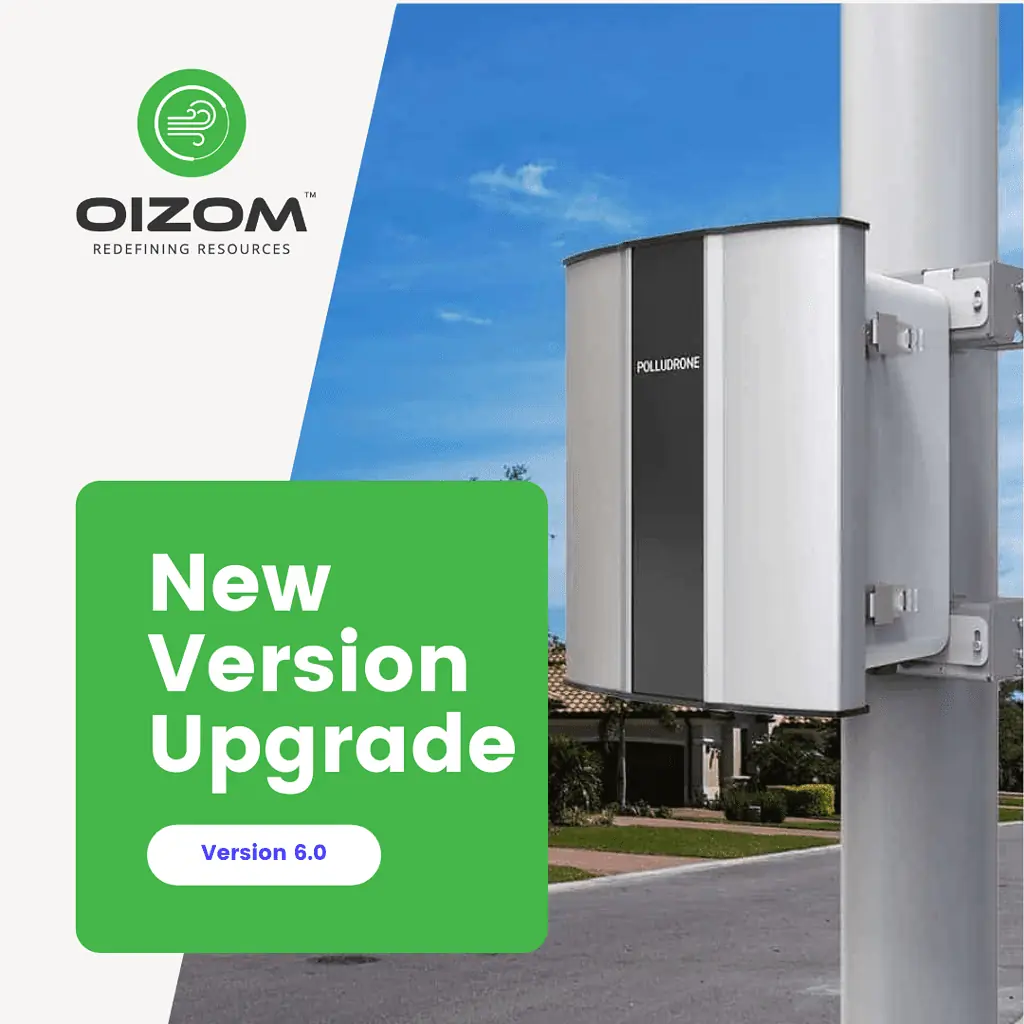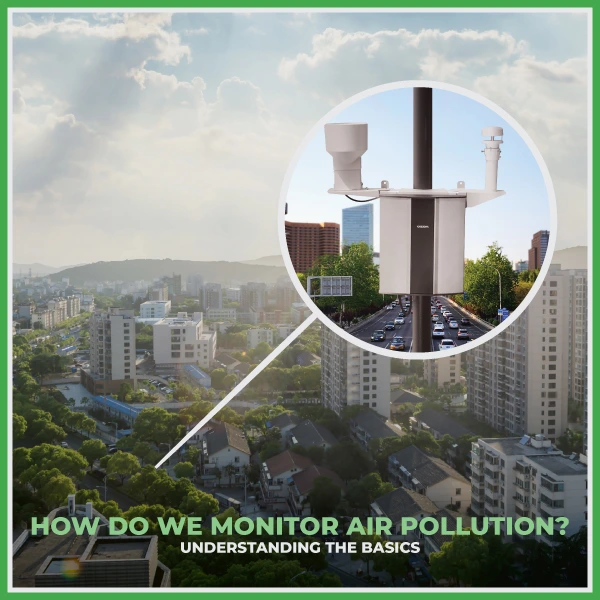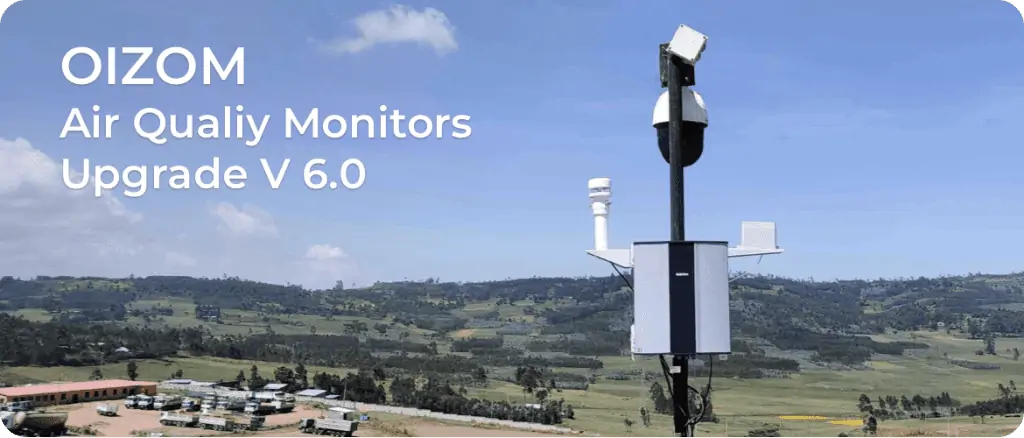
New feature development and implementation have always thrived at Oizom. The pandemic gave an opportunity for the R&D team at Oizom to work on a few improvements. With user feedback, the Oizom version upgrade is now part of the latest offerings. This blog showcases these new upgrades.
What were the standard offerings in the previous version?
Oizom products are built on a simple idea: monitoring environmental parameters(like air pollution, dust pollution, weather condition, etc). Real-time data is collected and transmitted on the Oizom cloud using different wired and wireless communication protocols. This data is then further used for strategic planning, insightful reports, and smart alerts.
Our products have features like Remote calibration, Operated by solar power, Over-the-air update, and many more. But there were certain limitations and many of these features were provided on request. Therefore, the idea of offering an Oizom design upgrade with the features to improve the product came into the picture.
Key features of the new version
Processor replaces Controller
In the previous version, our products used a 120 MHz ARM Cortex M3 micro-controller. It was a single-core controller that performed only one task at a time. Thus, when multiple services(like data pull requests and sensor data collection) were running simultaneously, they would sometimes conflict and result in erroneous readings. The external storage memory had 1MB flash memory and 128KB RAM. This combination was best at the time of launch but needed upgrades.
To overcome these few limitations, the Oizom version upgrade introduces the ARM Cortex A-72 processor. This method employs a quad-core ARM Cortex A-72 high-performance processor. This means that now our products can run multiple services (like sensor data collection, network management, and many more) simultaneously. This results in 80 times faster processing.
In the new version, we have incorporated a GPS with a built-in antenna. This means it will provide accurate coordinates. Also, we have used 8GB in-built eMMC to resolve the memory problem from the previous version. Also, in the previous version due to extreme industrial temperatures, corruption of SD cards was a possibility. The inclusion of eMMC solves the SD card issue, as it is tested at industrial temperature, so the chances of eMMC getting corrupted are very negligible. The new improved eMMC will store a minimum of 3 months of data in case of a network connectivity failure. Once the network is retrieved, this stored data will be auto-synced on the cloud database. Apart from this, in the new version, power consumption has increased to 5W which means the monitors will provide battery backup of around 12 hours.
EDIE inside
Our Environmental data interpretation engine or we fondly know it as EDIE is responsible for running temperature or humidity compensation algorithms on the raw sensor data. So the fine-tuning and validation of the data is done here. In the previous version, EDIE was on the cloud and data was pushed on the cloud to the client. But now, the new device itself has the EDIE inside. That means, all the processed data is generated in the device. The same HTTP Rest APIs which you will be using is now on the device. So one can easily pull the data by connecting the device into their network using the same API structure.
On-device Data Visualization
We have introduced the feature “On-device data visualization” in the new version. In the previous version, the product needed connectivity with ethernet or WiFi for debugging or calibration. In the new version, the product behaves in hotspot mode if not connected to WiFi or ethernet. Also via this feature, the product data can be accessed when it is connected to a laptop or any smart device. Thus, without any help from the support team, the customer himself can carry out debugging or calibration.
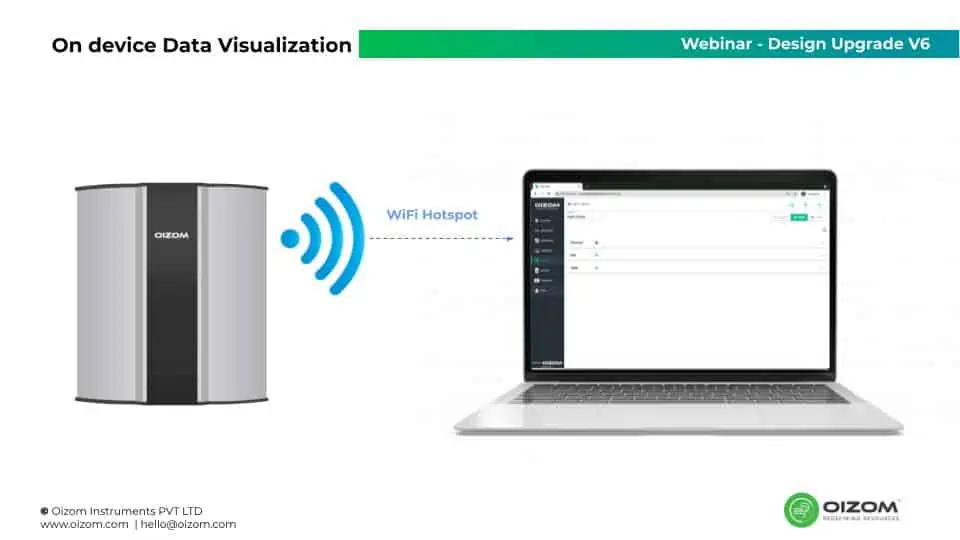
When the product connects to the laptop via hotspot, data visualization software can access the data. Over there, different setting options like sensor configuration and network configuration are available. In the sensor configuration tab, the customer can toggle on/off for the sensors provided in the product. In the network configuration tab, we have the WAN and LAN option. There are different sub-options like Ethernet, WiFi, GSM, MODBUS, and other switch protocols under WAN and LAN. The customer can update these network configuration options for his product.
On-device Spot Calibration
The Oizom version upgrade allows users to enable calibration mode through data visualization software. Previously, customers had to depend on the support team for configuring calibration and then to fine-tune the data. But now in the new version, customers can deploy their engineer on-site and get this process done. Through this process, users can perform both Zero and Span calibration. The UI of the software is very simple and user-friendly. Thus, it becomes possible to eliminate dependency on the support team.
Automation
One of the main feature requests of our customers was 3rd-party automation. Customers wanted to have threshold-based triggers for 3rd-party equipment(like Dust Collectors, Mist Canons, and so on). So, we have integrated this request in the form of a new feature. We have a built-in 2 channel relay connector. Using this connector it becomes possible to connect 3rd-party equipment and adjust threshold values at the same time. These threshold values are easily configurable using data visualization software.
Communication Modes
The new version now has added options of wired and wireless communications protocols. Apart from this, multiple network communication can work together with the help of a newly added smart network management protocol. For example, WiFi, GSM, and MODBUS can work together simultaneously. Other than these protocols, we also have added a Mini PCIe port. This means users can integrate with their own mode of communication. For example, connecting a mini PCIe NBIoT module via on-demand request.

Hardware changes
In the new version, we have incorporated various design adjustments. Incorporating these hardware modifications has made our products more reliable and successful. Following are hardware the changes in the Oizom version upgrade offers:
Connectors
In the new version, we have added dedicated connectors for MODBUS and 2 channel relay. So this becomes easy for users to integrate their 3rd-party equipment.
External sim slot
In the new version, the product has an external sim holder while the previous version included 9 steps to change the sim. Now, it takes just 3 steps instead of 9. Also in terms of protection, the external sim holder has a rating of IP67. The grade IP67 means full protection against dust and water(up to a certain time limit).

Rain sensor
The ultimate hardware upgrade we have made in the new version is the rainfall measurement sensor. The new version has a 200mm diameter metallic enclosure. This helps in eliminating any EMF(Electromotive force) interference. Apart from this, the new design upgrade complies with many global rainfall measurement standards(like the IMD).
Heated inlet for PM
In the new version, we have included a heated inlet for measuring Particulate matter accurately. There is some relation between PM(Particulate matter) and humidity. Because when PM2.5 and humidity come together in one equation, the result of the equation is erroneous. So, the basic function of this heated inlet is to nullify the effect of humidity on PM measurement. One of our products Dustroid Pro offers this feature.

Oizom Gas Sensor(OGS)
It is a robust gas sensing unit that increases sensor life. We use custom-made ISBs to mount OGS. Therefore, they follow standard proprietary protocol for data transmission. In the new version, we have designed the sensors with metallic enclosures so that they can nullify EMF interference. Apart from this, OGS has a standard plug-and-play footprint and multiple sensors can be inserted for easier operation. The colour-coded feature is the high-point of OGS. Because of this, they are easily identifiable on the sensor board and are replaceable too. This leads to simple maintenance.
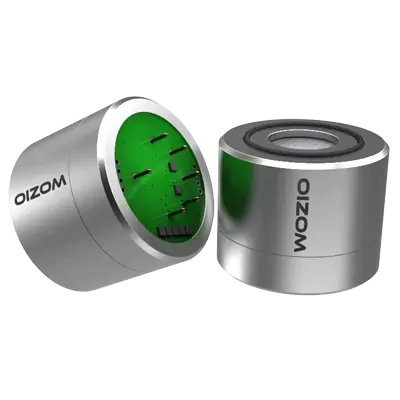
Complain Management Module
The last feature added in the new version is Complain Management Module. Our partners have helped us in understanding the end-users needs wherein they can register complaints. Their complaints can be like poor air quality or high dust concentration or any other. Thus to make end-users more satisfactory, we have included this feature through our complaint APIs.

The latest version has now boosted the capability of the products and suits the customer’s requirements. Our flagship products i.e. Polludrone, Dustroid, Odosense and Weathercom and now equipped with this Oizom version upgrade- V6.0. We thrive to improve more in the future with further technological improvements. Keep reading this section for more such updates.

